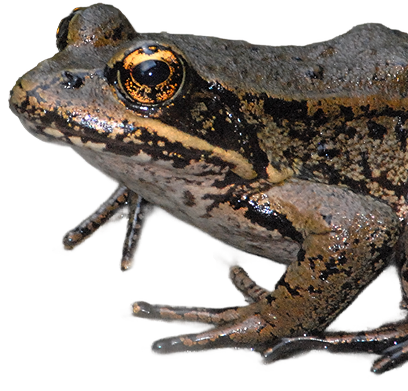Indigenous Knowledge
We are grateful for the knowledge shared with us during the development of this conservation website. The audio, video recordings and written material highlight the longstanding deep connections of Indigenous groups with amphibians and reptiles and can serve as a way to revitalize language and culture. We look towards deepening our understanding of Indigenous relationships with the natural world and connecting with other communities around the province to understand their knowledge, traditions and experience as it relates to frogs, toads, salamanders, lizards, turtles and snakes.
The Indigenous knowledge shared below has gone through extensive review and approval. These materials are for educational purposes only and must not be distributed or shared unless given permission.
Secwépemc Oral History of the Rattlesnake’s Range in Kamloops, BC
Retold by Paul Michel, Special Advisor to the President on Indigenous Matters
Oral History passed down from Secwépemc elders
Permission to retell this story by Paul Michel (May 17th, 2021)
East of what is now home to the South Thompson Inn and alongside the South Thompson River, there is a mountain range with markers that reminds the Secwépemc people of a historic battle between two giant brothers. These markers along with the surrounding mountain range were formed by two transformers, or land creators, that were brothers. These two giant brothers were having a fight between themselves, and during this battle all of their smashing, falls, and battering formed the mountain range as you see it today. During this battle one of the giant brothers took a rattlesnake and threw it west all the way towards Kamloops. This resolved their battle, and it is how the rattlesnake made its way to Kamloops. This place today marks the line where you will find rattlesnake habitat towards Kamloops, BC and also marks the line where rattlesnake habitats are not to be found towards Chase, BC.
Paul Michel explains that oral history is passed down through generations and each subsequent generation learns about this mountain range and land formation that were created by the battle of two giant brothers. This story reveals where the rattlesnake habitats begin and end alongside South Thompson River in Kamloops. It would take biologists years of effort to determine where rattlesnakes are found in this part of BC, but through oral history we can learn so many valuable lessons about the landscape and where animals exist within it.
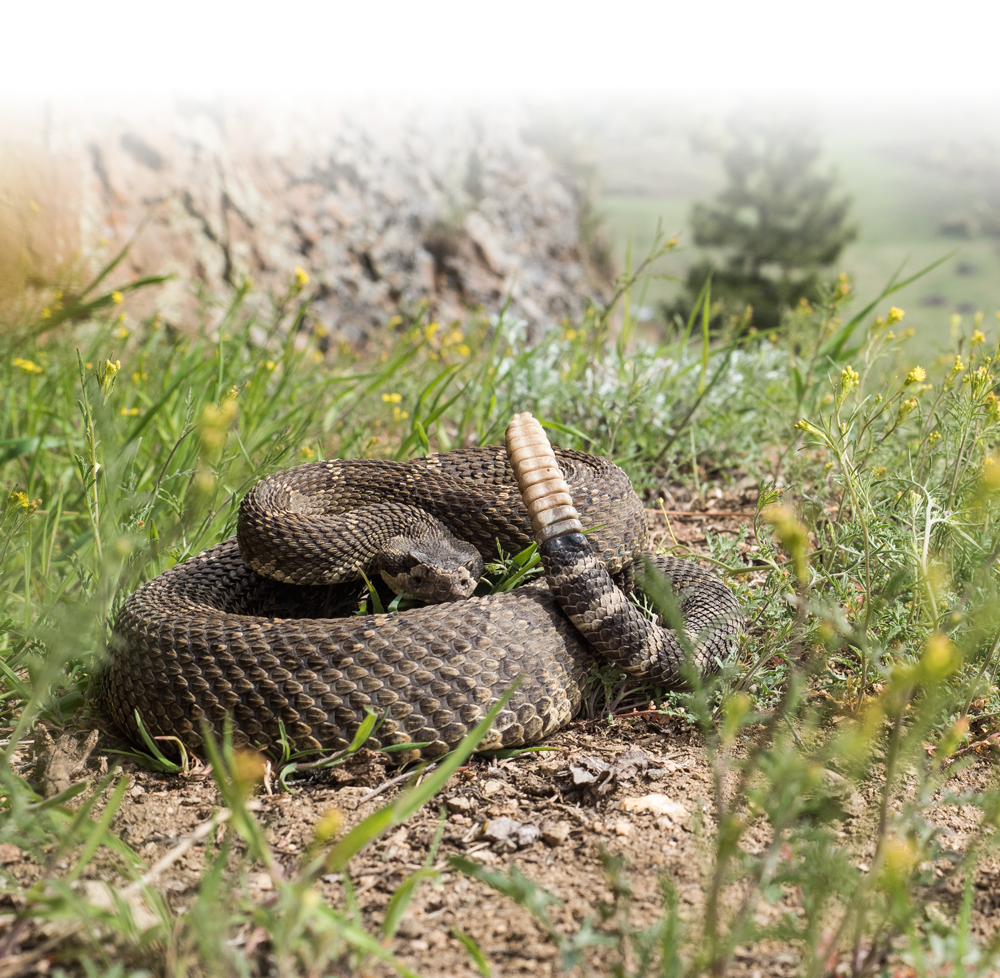
Secwépemc Oral History of the Rattlesnake’s Range in Kamloops, BC
Retold by Paul Michel, Special Advisor to the President on Indigenous Matters
Oral History passed down from Secwépemc elders
Permission to retell this story by Paul Michel (May 17th, 2021)
East of what is now home to the South Thompson Inn and alongside the South Thompson River, there is a mountain range with markers that reminds the Secwépemc people of a historic battle between two giant brothers. These markers along with the surrounding mountain range were formed by two transformers, or land creators, that were brothers. These two giant brothers were having a fight between themselves, and during this battle all of their smashing, falls, and battering formed the mountain range as you see it today. During this battle one of the giant brothers took a rattlesnake and threw it west all the way towards Kamloops. This resolved their battle, and it is how the rattlesnake made its way to Kamloops. This place today marks the line where you will find rattlesnake habitat towards Kamloops, BC and also marks the line where rattlesnake habitats are not to be found towards Chase, BC.
Paul Michel explains that oral history is passed down through generations and each subsequent generation learns about this mountain range and land formation that were created by the battle of two giant brothers. This story reveals where the rattlesnake habitats begin and end alongside South Thompson River in Kamloops. It would take biologists years of effort to determine where rattlesnakes are found in this part of BC, but through oral history we can learn so many valuable lessons about the landscape and where animals exist within it.
Sinixt Nation
In an act of bureaucratic genocide, the Sinixt were declared extinct for the purposes of Canada’s Indian Act in 1956 to make way for the damming of the Columbia River. However, Sinixt, continue to live in diaspora in both Canada and the USA. In 1990, with their active return to the 80% of their territory which is north of the Canada-US border, they began the work of repatriating and reburying ancestral remains. They continue to uphold their traditional laws of whuplak’n and Smum iem by working to protect the land and water, cultural sites and language to pass onto future generations of Sinixt.
In this video, elder Eva Adolph Orr tells the frog mountain story in in snselxcin followed by English translation by elder Marylin James. Thank you to Marylin James for providing permission to share this story and for sharing the resources below. Special thanks to Lori Barkley for her help and guidance.
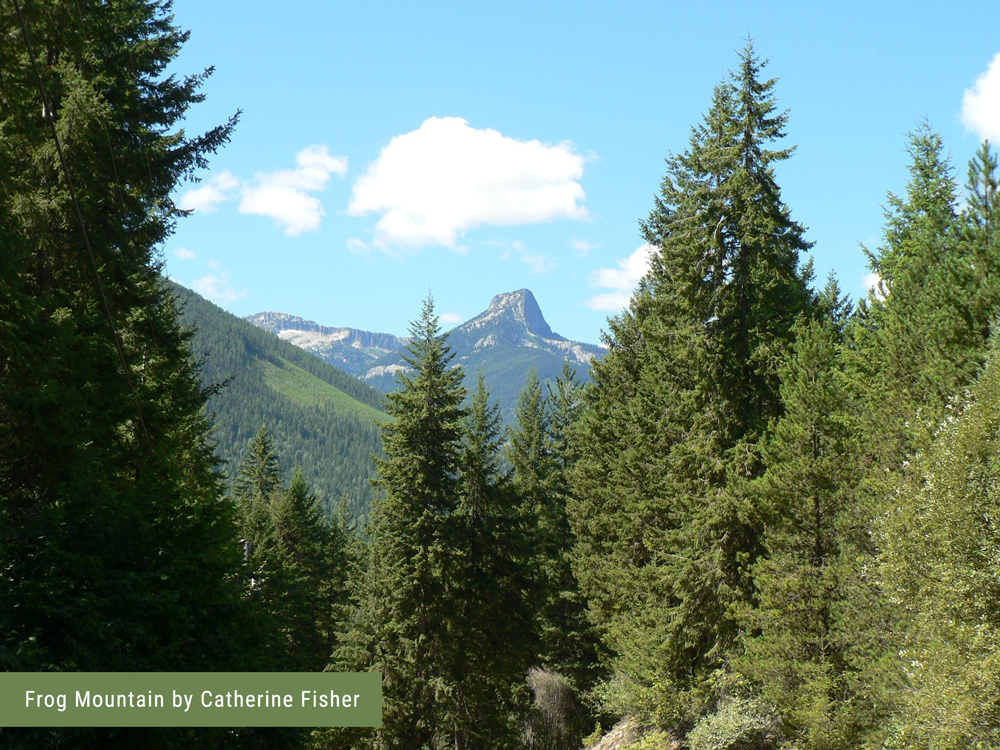
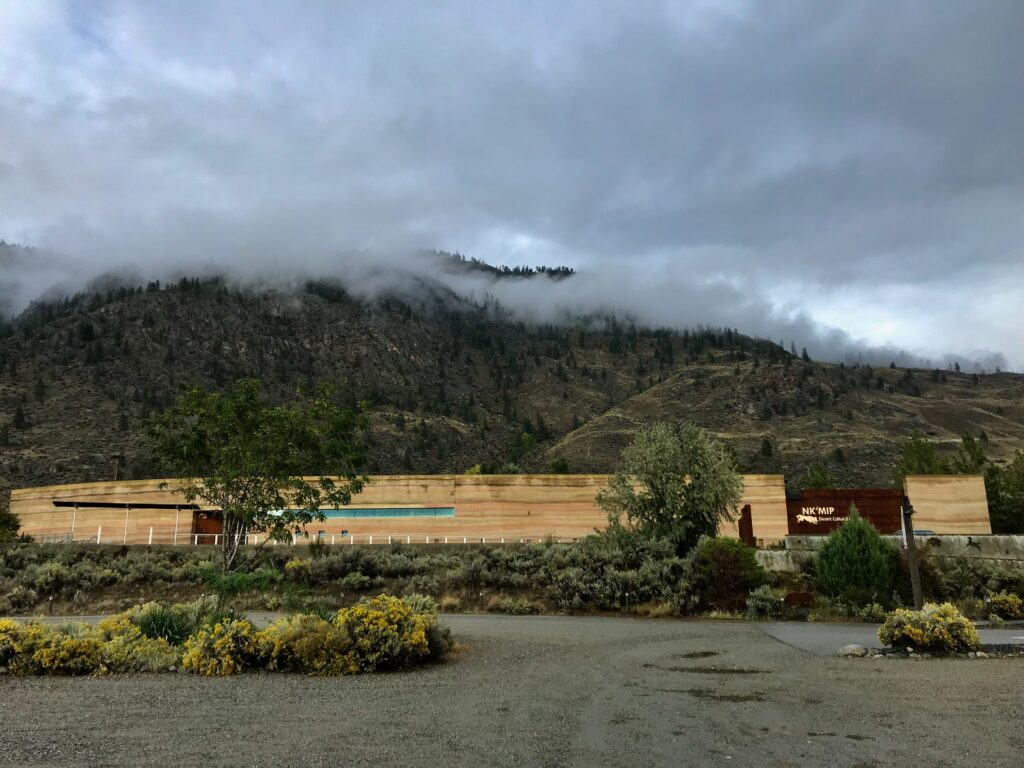
Nk’Mip Desert Cultural Centre
The Nk’Mip Desert Cultural Centre (NDCC) is a one-of-a-kind interpretive centre that resides on the southern end of the Osoyoos Indian Band (OIB) reserve, containing 650 hectares of one of Canada’s most endangered ecosystems-antelope brush and shrub steppe grasslands. The NDCC and OIB have been, and continue to be, instrumental in the stewardship and protection of several species at risk, including the Western Rattlesnake, and Great Basin Gopher Snake, to name a few. Through collaboration with Thompson Rivers University and Environment Canada, the NDCC and OIB have assisted researchers for over 18 years in learning more about snake movement, habitat use, den sites, gestation sites, shedding sites, summer ranges, and much more. During the summer months, the NDCC also runs daily programming called “Snakes Alive” that provides guests with a glimpse of the incredible snake species that reside in B.C. This ongoing work at the NDCC has been immensely important for the conservation of species at risk.
At the NDCC you will also be immersed in the rich culture of the sukʷnaʔqinx Okanagan People. The NDCC runs daily interpretive walks led by staff who share their knowledge of local flora and fauna through a cultural lens. Visitors are then asked to join interpreters in the theatre to listen to captikʷɬ (oral narratives). These captikʷɬ offer important values that the Okanagan People live by and are traditionally told by elders or knowledge keepers of a nation. If you are lucky, you may also witness cultural singing, drumming, and dancing during your visit.
If you are looking for a place to learn more about sukʷnaʔqinx Okanagan People, the environment, and stewardship, be sure to visit the NDCC!
Nk’Mip Desert Cultural Centre
The Nk’Mip Desert Cultural Centre (NDCC) is a one-of-a-kind interpretive centre that resides on the southern end of the Osoyoos Indian Band (OIB) reserve, containing 650 hectares of one of Canada’s most endangered ecosystems-antelope brush and shrub steppe grasslands. The NDCC and OIB have been, and continue to be, instrumental in the stewardship and protection of several species at risk, including the Western Rattlesnake, and Great Basin Gopher Snake, to name a few. Through collaboration with Thompson Rivers University and Environment Canada, the NDCC and OIB have assisted researchers for over 18 years in learning more about snake movement, habitat use, den sites, gestation sites, shedding sites, summer ranges, and much more. During the summer months, the NDCC also runs daily programming called “Snakes Alive” that provides guests with a glimpse of the incredible snake species that reside in B.C. This ongoing work at the NDCC has been immensely important for the conservation of species at risk.
At the NDCC you will also be immersed in the rich culture of the sukʷnaʔqinx Okanagan People. The NDCC runs daily interpretive walks led by staff who share their knowledge of local flora and fauna through a cultural lens. Visitors are then asked to join interpreters in the theatre to listen to captikʷɬ (oral narratives). These captikʷɬ offer important values that the Okanagan People live by and are traditionally told by elders or knowledge keepers of a nation. If you are lucky, you may also witness cultural singing, drumming, and dancing during your visit.
If you are looking for a place to learn more about sukʷnaʔqinx Okanagan People, the environment, and stewardship, be sure to visit the NDCC!
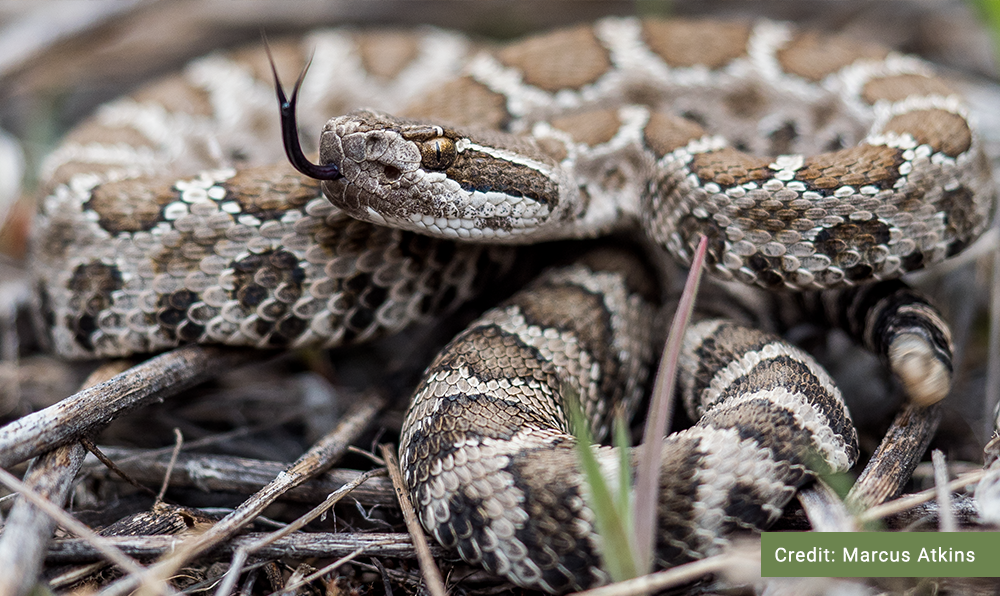
Osoyoos Indian Band Language House
The Osoyoos Indian Band (OIB) Language House resides on the Osoyoos Indian Band Reserve and opened its doors September 2019. Sheri Stelkia, an elder and knowledge keeper from the Osoyoos reserve, opened the OIB Language House with the assistance of Michele Johnson (Executive Director of Syilx Language House Association) and the support of Chief and Council. OIB Language House is funded by the First Peoples Cultural Council as well as OIB. Sheri began this journey to honor the memory of her aunt, Madasta Betterton, whom was a language teacher on the reserve and helped re-awaken Sheri’s interest in the nqilxʷcn language. Before she passed, Madasta told Sheri to continue to learn the language and pass it on to others. Since this time, Sheri has deeply immersed herself in learning and teaching. She is now in her third year of four and will be among the first graduates from the nqilxʷcn language fluency degree from UBCO, partnered with Nicola Valley Institute of Technology (NVIT) and the En’owkin Centre in Penticton. As she continues to learn the language, Sheri, alongside lead teacher Tiana Louis, have been teaching and sharing their knowledge with adult learners at the OIB Language House. She explains that it is important that adults be taught due to the loss of language from residential schools and the current lack of language teachers. This revitalization of the nqilxʷcn language will ensure that it is passed on to future generations, much like Madasta had dreamed.
Sheri describes that a day at the OIB Language house begins with a quiz, a morning prayer, and then a lesson that runs until three with a break for lunch. Sheri explains that the students are fully immersed in the language and are encouraged to only speak the language while class is in session. This can sometimes lead to moments of silence and frustration; however, it encourages students to not only read and write the language, but also speak it. Additionally, when the timing is right, language house members attend field trips on the land, along with invited speakers, who share valuable lessons in the nqilxʷcn language.
Sheri and OIB kindly offered to share a captikʷɬ called “The Rattlesnake and the Salmon” in the traditional nqilxʷcn language. captikʷɬ are oral narratives that the sukʷnaʔqinx (Okanagan People) live by. These narratives offer teachings and important values and are traditionally told and shared by elders or knowledge keepers of a nation. captikʷɬ are sacred stories that belong to the sukʷnaʔqinx (Okanagan People) and must not be shared unless given permission. These materials are for educational purposes only.

